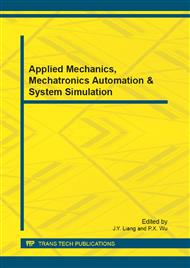p.1351
p.1357
p.1361
p.1367
p.1372
p.1378
p.1383
p.1389
p.1395
Design and Implement of the Reconfigurable Algorithm Based on uC/OS-II
Abstract:
More and more applications need The ability to customize the architecture to match the computation and the data flow of the application, so increasingly new system implementations based on reconfigurable computing are being considered. Reconfigurable computing has potential to accelerate a wide variety of applications; its main feature is the ability to perform computations in hardware to improve performance, while retaining the flexibility of software solutions. An operating system (OS) for reconfigurable computing uses new versions of algorithms for the scheduling, the operating system must decide how to allocate the hardware at run-time based on the status of the system. This paper discusses the scheduling algorithm for reconfigurable computing platform, covers two aspects of reconfigurable computing: architectures and design methods. The tasks are divided into two categories in this survey, consider the issues involved in reusing the configurable hardware during program execution. And improve μC/OS-II to manage the use of reconfigurable resources, responsible for task scheduling, helping the programmer to concentrate more on application development.
Info:
Periodical:
Pages:
1372-1377
Citation:
Online since:
September 2012
Authors:
Price:
Сopyright:
© 2012 Trans Tech Publications Ltd. All Rights Reserved
Share:
Citation:


